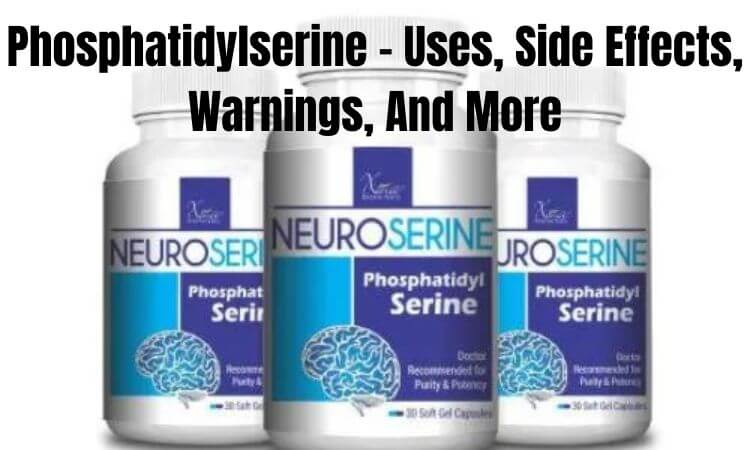Table of Contents
Phosphatidylserine – Uses, Side Effects, Warnings, And More
phosphatidylserine benefits,phosphatidylserine sleep,phosphatidylserine side effects,phosphatidylserine cortisol,phosphatidylserine structure,best phosphatidylserine supplement,phosphatidylserine sources,phosphatidylserine adhd,phosphatidylserine supplement,phosphatidylserine benefits,phosphatidylserine structure,phosphatidylserine side effects,phosphatidylserine sources,phosphatidylserine cortisol
Overview
Phosphatidylserine is a molecule that plays a significant role in many different tasks carried out by the human body, particularly those carried out by the brain. The majority of meals contain trace levels of the substance.
Phosphatidylserine is an integral component of the body’s cellular structure. Phosphatidylserine can be manufactured by the body, but the vast majority of what it requires is obtained from the diet. Additionally, it can be consumed in the form of a supplement. In the past, these supplements were manufactured from the brain of cows. In modern times, they are most frequently prepared from soy or cabbage.
DO NOT MISS: Holy Basil – Uses, Side Effects, Warnings, and More
Alzheimer’s disease as well as the usual decline in memory and thinking skills that comes with aging can be treated with phosphatidylserine. Additionally, it is utilized to enhance sports performance, treat ADHD, and serve a multitude of other functions; however, the majority of these applications are not supported by solid scientific data.
What Are the Benefits and Applications?
There is some evidence that this treatment can reverse the natural decline in memory and thinking skills that comes with advancing age. People who are getting older and experiencing a decline in their cognitive abilities may benefit from taking phosphatidylserine which is manufactured from the cow brain because this supplement appears to increase attention, language skills, and memory. Phosphatidylserine supplements, on the other hand, are almost often produced from soy or cabbage these days. It is unclear if or whether these dietary supplements provide the same effects.
Alzheimer disease. After six to twelve weeks of treatment, Alzheimer’s disease patients who take phosphatidylserine that is synthesized from cow brain may experience a reduction in the severity of certain of their symptoms. On the other hand, its effectiveness may decline over time. These days, the majority of phosphatidylserine supplements are derived from either soy or cabbage. It is unclear if or whether these dietary supplements provide the same effects.
There is a growing interest in employing phosphatidylserine for a variety of additional applications; however, there is insufficient trustworthy data to determine whether or not this would be beneficial.
Adverse Reactions
When consumed via the oral route: When taken for up to three months, phosphatidylserine may not pose any health risks. At doses of more than 300 milligrams, phosphatidylserine is more likely to cause adverse effects such as drowsiness and stomach discomfort.
There is some cause for concern that goods derived from animals may be a vector for the transmission of diseases such as mad cow disease. Supplements containing phosphatidylserine have not been linked to any reported instances of human beings contracting animal diseases. However, to err on the side of caution, opt for supplements that are produced from plants.
Important Safety Instructions and Cautionary Notes
The experiences of pregnancy and breastfeeding: There is not enough trustworthy information available to determine whether or not phosphatidylserine can be used safely during pregnancy or while breastfeeding. To be on the safe side, you should avoid using it.
When administered orally to children ages 4 to 18, phosphatidylserine may be safely used for a period of up to four months without posing any health risks.
YOU MAY LIKE THIS: Acesulfame Potassium- Uses, Side Effects, Warnings, and More
What are the interactions?
Interaction that is Not Overbearing
Take precautions when using these two together.
PHOSPHATIDYLSERINE is known to interact with drying treatments, often known as anticholinergic agents.
Phosphatidylserine has the potential to raise levels of acetylcholine, a neurotransmitter that is found in the body. Acetylcholine is a crucial component in a wide variety of essential bodily processes. Anticholinergic medicines are a class of pharmaceuticals that prevent the effects of acetylcholine from taking place in the body. Phosphatidylserine consumption has the potential to attenuate the results of anticholinergic medication.
Cholinergic medicines, which are used to treat glaucoma, Alzheimer’s disease, and a variety of other illnesses, have been shown to interact with phospatidylserine.
Phosphatidylserine has been shown to raise levels of acetylcholine, a neurotransmitter found in the body. Acetylcholine Alzheimer’slevels can be raised with the use of some drugs prescribed for the treatment of glaucoma, Alzheimer disease, and other illnesses. It is possible that the risk of adverse effects will be increased if you take phosphatidylserine in conjunction with these drugs.
Dosing
Adults have typically taken doses of phosphatidylserine ranging from 200 mg to 400 mg orally, once daily, for a period of one to three months. Talk to a medical professional about your symptoms to get a recommendation on the appropriate dosage for your condition.
In the past, the majority of phosphatidylserine supplements were manufactured using cow brains. Concerns concerning the possible transmission of animal diseases to humans, such as mad cow disease, were raised as a result of this. Although there are no known instances of this happening, the majority of items on the market today are derived from soy and cabbage. To err on the side of caution, continue using these items derived from plants.



